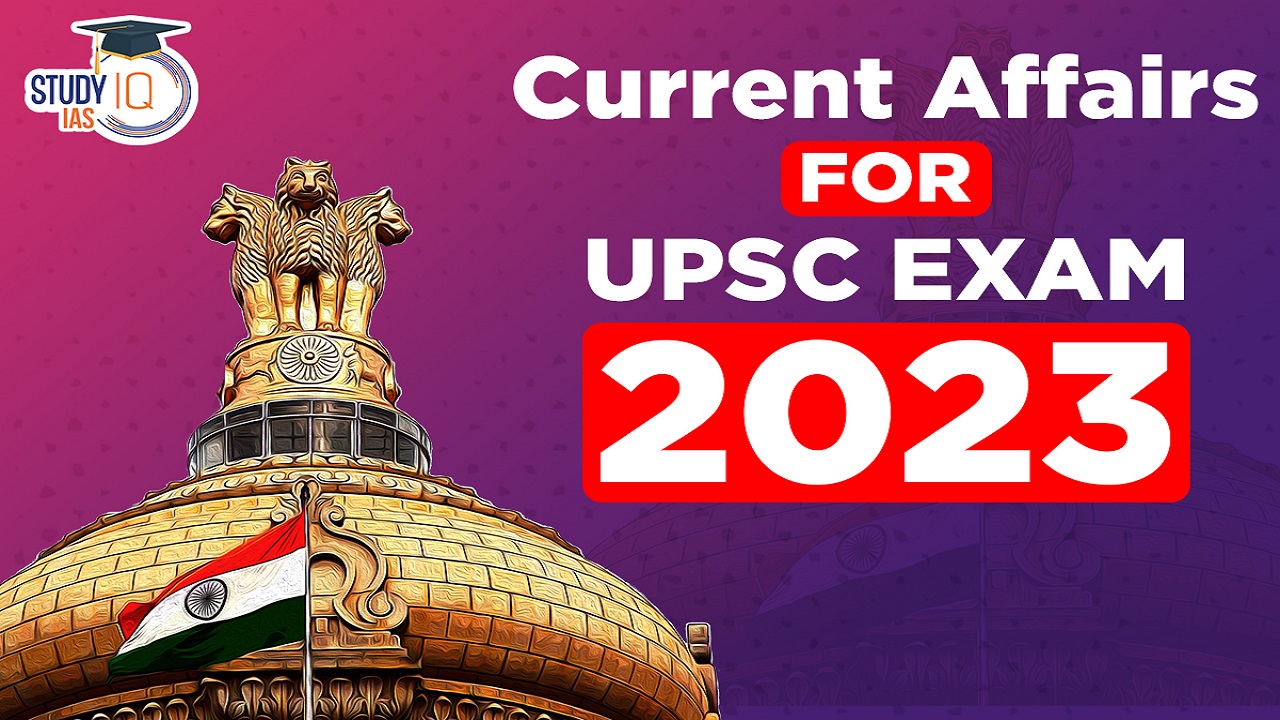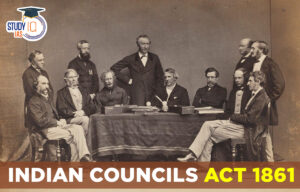Current Affairs 9th September 2023 for UPSC Prelims Exam
Incremental Cash Reserve Ratio (I-CRR)
Context: The Reserve Bank of India (RBI) has decided to discontinue the Incremental Cash Reserve Ratio (I-CRR) in a phased manner.
More on the News
- The I-CRR, which was introduced as a temporary measure to manage surplus liquidity, required scheduled banks to maintain a 10 percent reserve on the increase in their net demand and time liabilities (NDTL) between May 19, 2023, and July 28, 2023.
- The measure was implemented to absorb excess liquidity generated by various factors, notably the return of Rs 2,000 notes to the banking system.
- While 25% of the I-CRR maintained would be released on September 9, another 25% would be released on September 23 and the balance would be released on October 7.
Understanding CRR
- The Cash Reserve Ratio (CRR) is the percentage of a bank’s net demand and time abilities (NDTL) that it is required to maintain as cash reserves with the Reserve Bank of India (RBI).
- NDTL is the difference between the sum of demand and time liabilities (deposits) of a bank (with the public or the other bank) and the deposits in the form of assets held by the other banks.
- Demand Liabilities: The liabilities which bank have to pay on demand.
- Time Liabilities: The liabilities which bank have to pay after specific time period.
- When the RBI imposes a CRR requirement, it specifies the percentage of NDTL that banks must keep as cash reserves.
- For example, if the CRR is set at 4% a tank with NDTL of 100 crores must maintain 4 crore (4% of 100 crore) as cash reserves.
- It is an essential tool to maintain the health of the banking system. Banks cannot use this amount for lending or for any investment purposes.
- CRR is governed by the provisions of Section 42 of the Reserve Bank of India Act, 1934.
- Currently, CRR stands at 4.5 per cent.
About I-CRR
- The I-CRR, like the Cash Reserve Ratio (CRR), required banks to set aside a portion of their funds with the RBI.
- However, the I-CRR specifically targeted the increase in net demand and time liabilities during the specified period.
- This tool is used when the banks see a sudden surplus of deposits. This would lead to banks’ lending more and infusing more money in the economy and creating inflation.
- Therefore, a different CRR is used for the deposits from a particular date, to ensure that excess liquidity is absorbed by the RBI in the form of Incremental CRR.
Current Affairs 8th September 2023 for UPSC Prelims Exam
One Sun, One World, One Grid
Context: Recently a conference on “Transnational Grid Interconnections for One Sun, One World, One Grid (OSOWOG)” was held in New Delhi.
What is One Sun, One World, One Grid (OSOWOG) Initiative?
- Origin: The idea for the One Sun One World One Grid (OSOWOG) initiative was put forth by the Prime Minister of India at the First Assembly of the International Solar Alliance (ISA) in 2018.
- Launch: It was jointly launched by the Prime Minister of India and Prime Minister of the United Kingdom during the ‘Accelerating Innovation and Clean Technology Deployment’ event at the World Leaders Summit held on 2 November 2021 during COP26.
- Aim: To aid in developing a worldwide grid through which clean energy can be transmitted anywhere, anytime (use power at night in one part of the world from solar energy generated on the other side of the world where it is daytime).
- It also aims to help in reducing storage needs and enhancing the viability of solar projects.
- Its ultimate goal is to reduce carbon footprints and energy costs.
- Interconnected green grids shall enable all nations to meet the targets of the Paris Agreement to prevent dangerous climate change.
- One Sun, One World, One Grid (OSOWOG) Initiative can stimulate green investments and create millions of good jobs.
- Vision: The vision behind the OSOWOG initiative is the mantra that “the sun never sets”.

How will OSOWOG be Implemented?
- OSOWOG is divided into three main phases:
- First Phase: In the first phase, the Indian grid would be connected to the grids of Middle East, South Asia and South-East Asia to develop a common grid. This grid would then be used to share solar energy as per need, in addition to other renewable energy sources.
- Second Phase: The second phase would connect the functional first phase to the pool of renewable resources in Africa.
- Third Phase: The third phase would look at achieving true global interconnection. The idea will be to integrate as many countries as possible to create a single power grid of renewable energy. This can then be accessed by all countries.
How will OSOWOG Help the World become More Sustainable?
- All participants in the initiative will focus on attracting effective investments in renewable energy sources by utilizing technology, finance and skill.
- When all stakeholders coordinate, it is expected to bring down project cost, lead to higher efficiencies and increased asset utilization for all involved.
- The initiative may have a spillover effect, as the cost effective source of energy production could be used in other areas such as poverty alleviation, provision of drinking water, sanitation facilities and food security.
- Global collaboration will bring in increased investment into research and development.
Fugitive Economic Offenders Act, 2018
Relevance: GS 2: Government policies and interventions
Context: Union Minister Jitendra Singh stated that assets worth more than $1.8 billion have been recovered in the last four years under the Fugitive Economic Offenders Act, 2018.
Salient Features of the Fugitive Economic Offenders Act, 2018
- Objective of the Act: The Act seeks to confiscate properties of economic offenders who have left the country to avoid facing criminal prosecution or refuse to return to the country to face prosecution.
- Definition of Fugitive Economic Offender (FEO): Under the FEO Act, a person can be declared a FEO upon the satisfaction of two conditions:
- An arrest warrant has been issued against the person for any offences listed in the Act where the value involved is over Rs 100 crore, and
- He/she has left the country and refuses to return to face prosecution.
- Offences listed in the Act: The Act lists 55 economic offences in the Schedule, which include: (i) counterfeiting government stamps or currency, (ii) dishonouring cheques, (iii) benami transactions, (iv) transactions defrauding creditors, (v) tax evasion, and (vi) money-laundering.
- How is an individual declared an FEO?
- In order to declare an individual a ‘fugitive economic offender’, an application should be filed in a Special Court designated under the Prevention of Money-Laundering Act (PMLA), 2002.
- The application should contain details of the properties to be confiscated and any details about the person’s whereabouts.
- Then, the Special Court would issue a notice asking the individual to be present at a prescribed place at least six weeks from the date of notice.
- If the person presents himself/herself, the proceedings would be dropped.
- The Act allows designated authorities to provisionally attach properties of an accused, while the application is pending before the Special Court.
- Upon declaration as an FEO, properties of a person may be confiscated and vested in the central government, free of encumbrances (rights and claims in the property).
- Further, the FEO or any company associated with him may be barred from filing or defending civil claims.
- Authorities: The authorities under the PMLA, 2002 will exercise powers given to them under the Bill. These powers will be similar to those of a civil court, including:
- search of persons in possession of records or proceeds of crime,
- search of premises on the belief that a person is an FEO, and
- seizure of documents.
The Black Sea Grain Initiative
Context: United Nations Secretary-General is on a mission to revive the Black Sea Grain Initiative (BSGI or BSI).
What is Black Sea Grain Initiative?
- Background: Ukraine is a major contributor to the UN’s food aid programme.
- When Russia invaded the country and blockaded its ports, it sent food prices soaring and raised fears of food security in the poorer nations of the world.
- Pakistan, for instance, saw wheat prices skyrocket to crisis levels.
- Black Sea Grain Initiative is aimed to calm markets by ensuring an adequate supply of grains, thereby limiting food price inflation.

- The Deal: On July 22, 2022, the UN and Turkey got Russia to agree to the Black Sea Grain Initiative.
- Under the deal, the cargo ships would be allowed to travel from and to three Ukrainian ports of Odesa, Chornomorsk and Pivdennyi (Yuzhny), after inspection that they weren’t carrying arms.
- The safe passage in the Black Sea was 310 nautical miles long and three nautical miles wide.
- Features of the Deal:
- Joint Coordination Centre (JCC): The deal put in place a JCC, comprising senior representatives from Russia, Turkey, Ukraine and the UN for oversight and coordination.
- All commercial ships are required to register directly with the JCC to ensure appropriate monitoring, inspection and safe passage.
- Inbound and outbound ships (to the designated corridor) transit as per a schedule accorded by the JCC post-inspection.
- This is done to ensure there is no unauthorised cargo or personnel onboard.
- Following this, they are allowed to sail onwards to Ukrainian ports for loading through the designated corridor.
- Joint Coordination Centre (JCC): The deal put in place a JCC, comprising senior representatives from Russia, Turkey, Ukraine and the UN for oversight and coordination.
- Importance of the Deal:
- This initiative has allowed Ukraine to export 32.9 million metric tons of grain and other food to the world, more than half of that to developing nations.
- As per the UN Food and Agricultural Organisation’s (FAO) Food Price Index, the supply situation in markets was seen to be easing, with the potential for further price drops.
- The initiative has made a “huge difference” to the global cost of living crisis.
- The U.N. World Food Programme (WFP) warned in March 2022 that its ability to feed some 125 million people was under threat because 50% of its grain came from Ukraine.
- As per the UN, 36 countries count on Russia and Ukraine for more than half of their wheat imports, including some of the poorest and most vulnerable, including Lebanon, Syria, Yemen, Somalia and Democratic Republic of Congo.
- The Black Sea deal is critical for the food security of a number of countries:
- People in developing countries spend more of their money on meals. Poorer nations that depend on imported food priced in dollars also are spending more as their currencies weaken and they are forced to import more because of climate issues. Places like Somalia, Kenya, Morocco and Tunisia are struggling with drought.
- Under the Black Sea grain deal, more than 625,000 tonnes of grain have so far been shipped by the WFP for aid operations in Afghanistan, Ethiopia, Kenya, Somalia and Yemen. In 2022, WFP procured more than half its global wheat grain from Ukraine.
- High costs for grain needed for food staples in places like Egypt, Lebanon and Nigeria exacerbated economic challenges and helped push millions more people into poverty or food insecurity.
- Russian Complaints:
- Russia says that it has been cheated by the West because its own exports still faced problems.
- As per Russia, it only agreed to the deal for the sake of countries in Africa and Latin America but that only around 3.2-3.4% of the grain goes to the world’s poorest countries while 40% went to prosperous countries.
- According to U.N. data, around 3% of exports under the Black Sea deal has gone to low-income countries, while high income countries get around 44% and the rest to middle-income states.
- Demands of Russia for its Continued Cooperation in the Grain Deal:
- Russia wants the resumption of its Black Sea ammonia exports via a pipeline from Russia’s Togliatti to Ukraine’s Pivdennyi port.
- The pipeline, which pumped up to 2.5 million tonnes of ammonia annually, was shut down by the war.
- Until the ammonia pipeline is restarted, Russia has said it will limit the number of vessels allowed to travel to Pivdennyi port under the Black Sea grain deal.
- In a letter to U.N. officials, Russia has said that it wants the Russian Agricultural Bank (Rosselkhozbank) reconnected to the SWIFT payments system. The bank was cut off from SWIFT by the European Union in June 2022 over Russia’s invasion.
- Russia also wants a resumption of supplies to Russia of agricultural machinery and spare parts; lifting restrictions on insurance and access to ports for Russian ships and cargo; and unblocking accounts and financial activities of Russian fertilizer companies.
- Russia wants the resumption of its Black Sea ammonia exports via a pipeline from Russia’s Togliatti to Ukraine’s Pivdennyi port.


 Bihu Festival and Dance of Assam, Histor...
Bihu Festival and Dance of Assam, Histor...
 World Heritage Day 2025, Theme, Objectiv...
World Heritage Day 2025, Theme, Objectiv...
 Indian Councils Act 1861, History, Provi...
Indian Councils Act 1861, History, Provi...





















